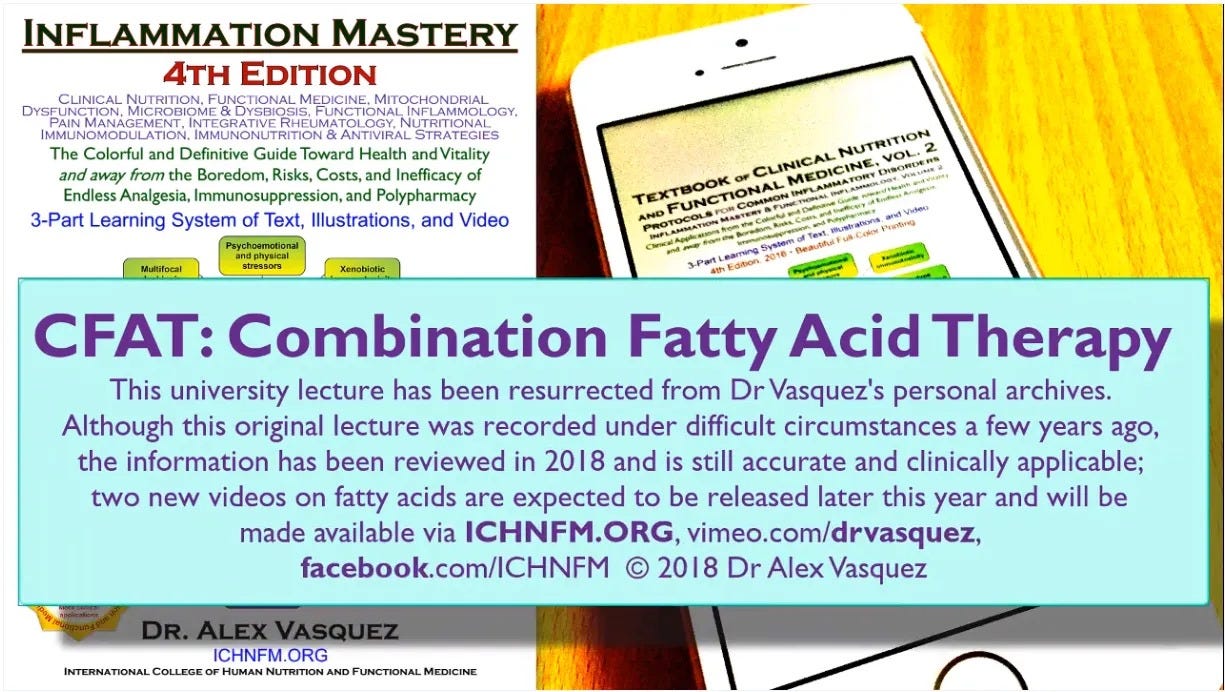VIDEO: 25-year Evolution of COMBINATION FATTY ACID THERAPY (CFAT)
This 2-hour-and-11-minute presentation was prepared for and delivered to my graduate students (at the Master of Science level). I think that it is sufficiently complete to encompass newer discoveries
This page was replaced in December2024 with the new page linked HERE and below:
Dr Vasquez's CFAT: Combination Fatty Acid Therapy [ARCHIVED VIDEO]
·
As this platform has evolved to allow embedded/posted/included videos, some of the previously shared videos are being archived directly into the the website. FYI—be sure to see today’s post on newer research on the use of fatty acids in the treatment of chronic headache





![Dr Vasquez's CFAT: Combination Fatty Acid Therapy [ARCHIVED VIDEO]](https://substackcdn.com/image/fetch/$s_!r5p4!,w_1300,h_650,c_fill,f_auto,q_auto:good,fl_progressive:steep,g_auto/https%3A%2F%2Fsubstack-video.s3.amazonaws.com%2Fvideo_upload%2Fpost%2F152592568%2Ff98ac8f7-4e2c-4591-bc8e-491aed77a720%2Ftranscoded-00001.png)